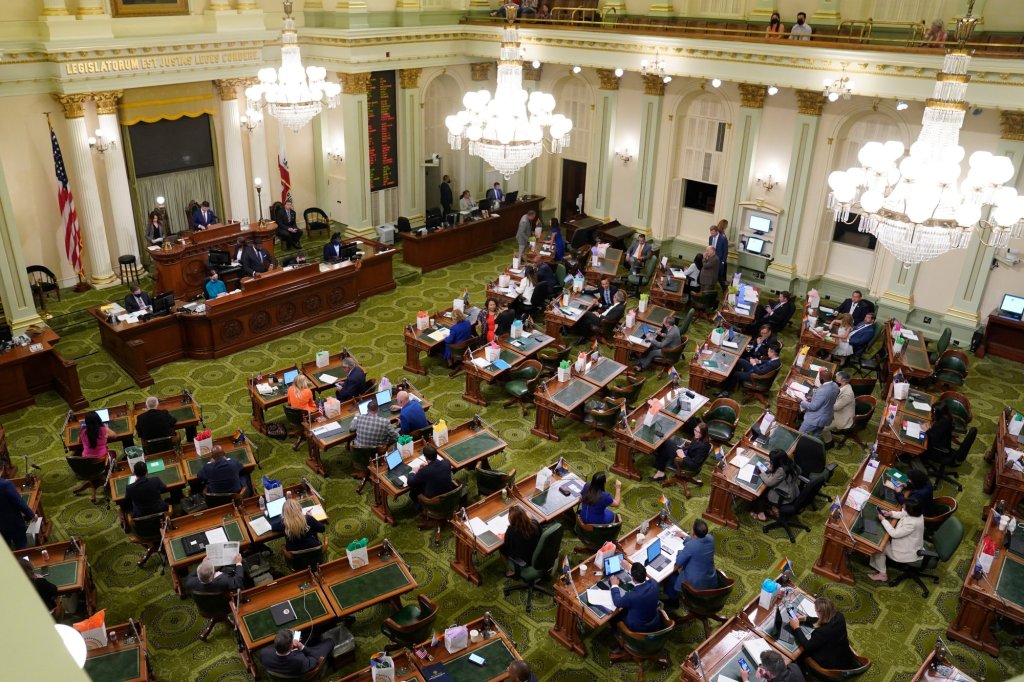
SACRAMENTO—It’s been 26 years since the California Legislature passed a landmark law that dramatically boosted California Highway Patrol pensions—a move that municipalities quickly followed. Senate Bill 400 was designed with the obvious intent that other agencies would follow that pension-increasing lead. So that one law built the foundation of the state’s pension crisis and has obliterated local budgets and public services ever since.
The banal-seeming switch from a “2% at 50” to “3% at 50” pension formula meant that officers could retire at age 50 with 90% of their final pay rather than 60%. After a few cities and counties upped their retirement benefits and expanded it to other job categories, it became imperative that everyone else do so—or else they wouldn’t be able to retain employees who would flee elsewhere. Or so we were told.
The markets were soaring at the time, so unions and the California Public Employees’ Retirement System (CalPERS) claimed that the massive pension hikes wouldn’t cost taxpayers a dime. Then after the horrific 9-11 attacks, there was no stopping agencies from showing their support for first responders and opening the treasuries. I recall California police and fire unions pointing to the 9-11 tragedy as a rationale for their new compensation demands.
Pensions seem complicated, but the concept is simple. In the private sector, most workers receive 401(k) retirement benefits, known as a defined contribution. They contribute money into a plan. Sometimes the employer matches their contribution. When the market soars, their earnings increase. When it falls, they decrease. Most workers also receive Social Security benefits, which provide a relatively modest monthly stipend.
Government employees receive defined-benefit pensions, whereby the agency guarantees an employee (and spouse) a retirement payout based on a formula. If, say, a police officer earns $150,000 a year in pensionable benefits (overtime and special pay generally don’t count), then that officer will receive $135,000 a year after 30 years of work as early as age 50 until death. Even if the pension funds invest the contributions poorly or the stock market crashes, the payout is guaranteed. It’s a senior obligation of the state—it gets paid before almost anything else.
But a funny thing happened despite all the “free money” promises. In 2008, the nation endured a grueling financial crisis. Stocks fell. Funding ratios plummeted. Those pension boosts cost taxpayers more than a dime. Local governments had to boost their contributions and cut back employment and services. A pension-reform movement was born, although any serious efforts to pare back these lush benefits were eventually scuttled by the state and courts.
By 2013, however, California was facing concurrent budget and pension crises. Then-Gov. Jerry Brown signed a modest but important pension-reform law (PEPRA, or the Public Employees’ Pension Reform Act) that scaled back those formulas for new workers and limited pension-spiking gimmicks. It was too modest to fix the problem, but it slowed its spread.
Not wanting to anger its union patrons, the Legislature then just left the remaining problem to fester even though CalPERS only has around 75% of the funds needed to fulfill all of its pension promises. This is California, after all, where lawmakers don’t solve problems or confront interest groups unless we’re on the precipice of a huge disaster. And that was that.
But now the Legislature is eager to address pensions again, but its goal appears to make the problem far worse. Assembly Bill 1383, by Assembly member Tina McKinnor, D-Inglewood, would gut PEPRA’s reforms by reinstating more generous pension formulas. It’s pushed by a firefighters’ union. No one wants to say no to firefighters after the horrific Los Angeles wildfires.
The timing is particularly bad. As noted above, CalPERS’ pension-funding ratio remains in precarious territory even after PEPRA reforms, a historic surge in stock-market gains and dramatic increases in municipal pension contributions. And that low funding percentage does not reflect the latest stock-market turmoil. If President Donald Trump continues to blow up financial markets, the pension funds (and taxpayers) will be in a heap of trouble.
Firefighters are pushing this as a retention measure, but that’s nonsense. The main retention problem is firefighters retire at such young ages that it creates a shortage. Average total firefighter compensation is well above $200,000 at the municipal level and individual salaries can reach eye-popping levels. There typically are long lines for openings. Some police agencies have recruitment challenges, but adjusting salaries is more sensible than granting un-revocable pension boosts.
One can only hope lawmakers are paying careful attention to the likelihood of recession. CalMatters reported that CalPERS lost $15 billion in the recent two-day drop related to Trump’s tariff threats. That’s a huge problem with current pension formulas, but could result in disaster if the Legislature forgets its lessons since 1999. Then again, this is California, where it’s safe to expect union demands to win out over sound fiscal stewardship.
Steven Greenhut is Western region director for the R Street Institute and a member of the Southern California News Group editorial board. Write to him at sgreenhut@rstreet.org.
Originally Published:



